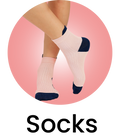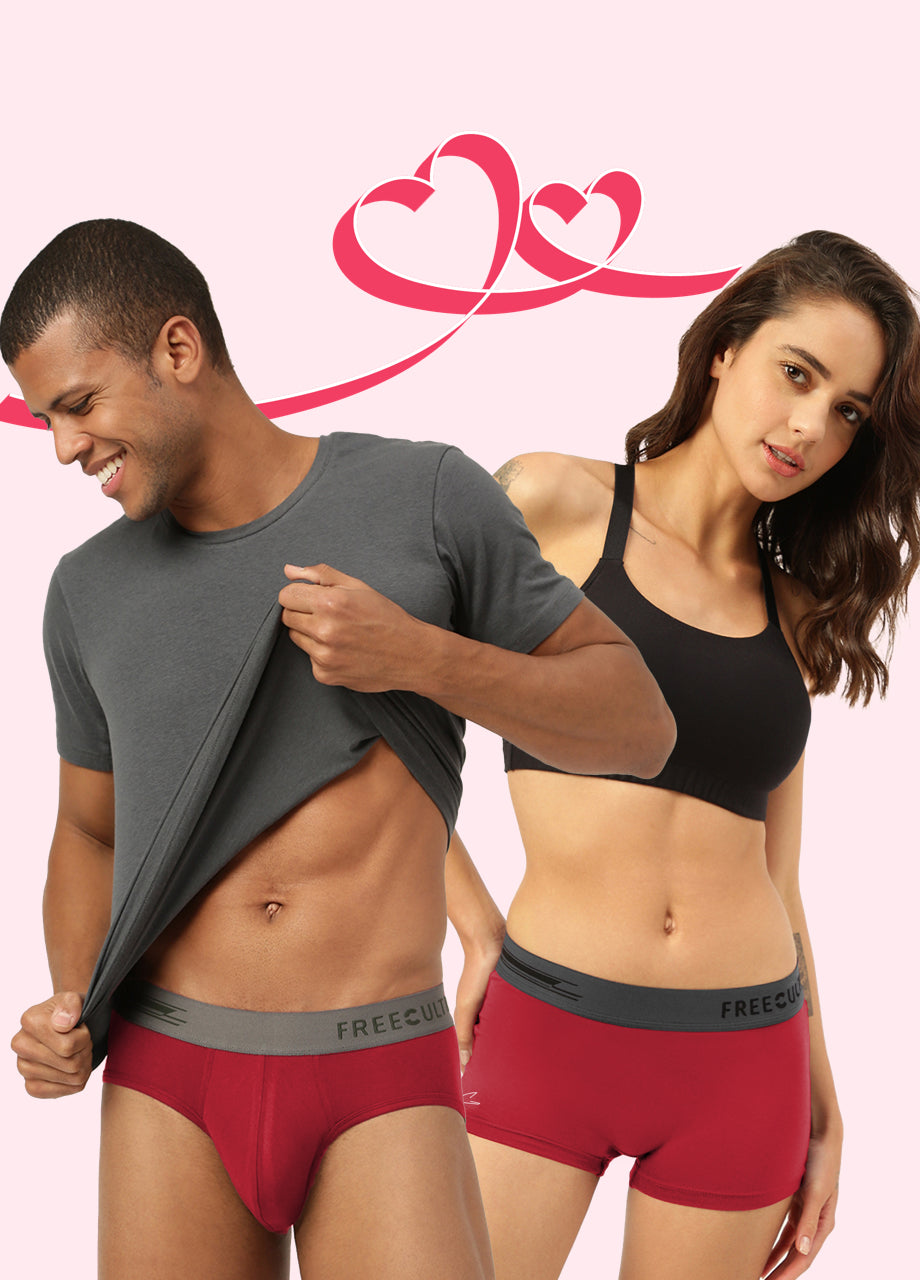Achieving optimal comfort and support from underwear transcends mere aesthetics; it directly impacts daily well-being and confidence. Many individuals unknowingly compromise their comfort with ill-fitting garments, leading to issues like chafing, uncomfortable bunching, or inadequate support—problems amplified by the precision demands of modern performance fabrics and seamless designs. As brands increasingly utilize advanced materials like Tencel Modal for enhanced stretch and recovery. even explore digital sizing tools, understanding your true measurements becomes paramount due to sizing inconsistencies across manufacturers. A reliable underwear size chart is your essential tool, translating precise waist and hip measurements into the foundational data for selecting garments that adapt flawlessly to your body's contours, ensuring maximum comfort and preventing common fit discrepancies.

Why Underwear Fit Matters (More Than You Think!)
Ever pull on a pair of underwear and immediately feel... off? Maybe it's digging in, bunching up, or just not sitting right. We've all been there! It might seem like a small thing. the fit of your underwear plays a huge role in your daily comfort, confidence. even your health. Think about it: it's the first thing you put on and the closest thing to your skin all day long. A perfect fit means no more chafing, no awkward adjustments. no visible lines under your clothes. It’s about feeling good from the inside out, allowing you to move freely and focus on your day without any nagging discomfort.
Beyond just comfort, ill-fitting underwear can lead to real issues. Too tight? You might experience restricted circulation, skin irritation, or even increase the risk of yeast infections (for women) or reduced sperm count (for men, due to increased temperature). Too loose? Hello, bunching, sagging. a lack of support that can leave you feeling... well, unsupported! Getting the right size, by truly understanding an underwear size chart, is the first step towards a happier, healthier you.
Decoding the Underwear Size Chart: Your Essential Guide
So, you’ve picked out a super comfy-looking pair online. then you hit the dreaded size selection. S, M, L, XL... or maybe numbers like 28, 30, 32? And what about those perplexing "one size fits all" claims? Navigating an underwear size chart can feel like deciphering ancient hieroglyphics. it's actually quite straightforward once you know what to look for. Most brands provide an underwear size chart that correlates body measurements (typically waist and hips) to their specific sizing labels.
Here’s a general breakdown of what you’ll usually see and how to interpret it:
- Waist Measurement This is almost always a key measurement. It refers to the smallest part of your waist, usually just above your belly button.
- Hip Measurement Also crucial, especially for styles that cover more of your derriere. This is the fullest part of your hips and glutes.
- Rise While not always on the primary underwear size chart, some detailed charts might include 'rise' (low-rise, mid-rise, high-rise), which indicates where the waistband will sit on your body.
- Numeric Sizing (e. g. , 28, 30, 32) Often found in men's underwear, these numbers typically correspond directly to your waist measurement in inches.
- Alpha Sizing (e. g. , S, M, L, XL) This is the most common and usually encompasses a range of waist and hip measurements. For example, a "Medium" might cover waist sizes 30-32 inches and hip sizes 36-38 inches.
How to Measure Yourself Like a Pro (No More Guesswork!)
Ready to ditch the guessing game? Grabbing a tape measure and knowing your own numbers is the most empowering step you can take towards finding your perfect fit. It's super easy, we promise! You'll need a flexible tape measure (the kind tailors use) and ideally, a mirror or a helping hand.
Here’s how to get those essential measurements:
- Waist Find the narrowest part of your waist, usually just above your belly button. Wrap the tape measure snugly but not tightly around this area. Breathe out naturally and note the measurement. This is typically where your natural waistline is.
- Hips Stand with your feet together. Find the fullest part of your hips and glutes. Wrap the tape measure around this area, making sure it’s level all the way around. This is often below your hip bones.
Once you have these two measurements, compare them to the brand's underwear size chart. If you fall between two sizes, consider the fabric and style. For stretchier fabrics or styles like briefs, you might size down for a snugger fit. For woven fabrics like boxers, or if you prefer a looser feel, size up.
Personal Anecdote: "I used to just grab a size 'M' because that's what I always wore in t-shirts. Turns out, my actual waist measurement put me squarely in a 'L' for many underwear brands. The difference in comfort was night and day! No more tight waistbands digging in."
Understanding Different Underwear Styles & Their Sizing Nuances
The world of underwear is vast and wonderful, offering a style for every preference and outfit. But here's the kicker: how each style fits can vary, even if you're using the same underwear size chart. Let's break down some popular types:
- Briefs Offering maximum support and minimal fabric coverage on the leg. Sizing here is usually quite straightforward, relying heavily on waist measurement. A good fit means no pinching at the leg openings or waistband. adequate support.
- Boxers Loose-fitting and airy, providing maximum breathability. Sizing for boxers often focuses more on waist measurement, as the leg opening is less restrictive. Comfort comes from not feeling baggy or too tight around the waist.
- Boxer Briefs A hybrid of briefs and boxers, offering support with added leg coverage. The fit around the thighs is key here. Too small. they'll ride up uncomfortably; too large. they'll bunch. Pay attention to the leg opening measurement if available on the underwear size chart.
- Trunks Similar to boxer briefs but with a shorter leg. Sizing considerations are similar to boxer briefs, focusing on the waist and a comfortable, non-constricting fit around the upper thigh.
- Thongs & G-Strings Minimal coverage in the back, designed to eliminate panty lines. Sizing typically focuses on the waist/hip measurement. The key is ensuring the string doesn't dig in uncomfortably.
- Bikini & Hipster Both offer moderate coverage and sit lower on the hips. Bikini often has higher leg cuts, while hipsters sit squarely on the hips. Sizing relies on hip measurements primarily, ensuring comfortable leg openings.
Even within the same brand, a brief in your size might feel different than a boxer brief in the same size due to the cut and intended fit. Always consider the style's inherent design when comparing to the underwear size chart.
Unisex vs. Gender-Specific Sizing: What You Need to Know
While many underwear brands cater specifically to men or women, the rise of gender-neutral fashion has brought more unisex options into the mix. This can sometimes add a layer of confusion to the underwear size chart game. understanding the differences can help.
Generally:
- Gender-Specific Sizing
- Women's underwear is typically designed with wider hip-to-waist ratios and often considers bust measurements (for bralettes/camisoles) and the natural curve of the female body. The rise and leg openings are tailored accordingly.
- Men's underwear accounts for different anatomical needs, often with more room in the front and a focus on waist and inseam measurements for styles with legs.
- Unisex Sizing These charts aim for a more generalized fit, often focusing on a more linear waist-to-hip ratio. While convenient, some individuals might find they need to experiment more to get that "perfect" contoured fit, as these designs try to accommodate a broader range of body types. When looking at a unisex underwear size chart, pay extra attention to both waist and hip measurements to ensure you don't end up with something too baggy or too restrictive in specific areas.
It's always best to check if the brand specifies if their sizing is gender-specific or unisex. If it's unisex, double-check the detailed measurements against your own, as the fit might be less tailored than gender-specific designs.
The Goldilocks Principle: Signs You're Wearing the Wrong Size
You know the story: not too big, not too small. just right! This applies perfectly to your underwear. Even if you've consulted an underwear size chart, sometimes the real-world fit tells a different story. Here are some tell-tale signs that your underwear isn't quite the perfect fit:
<table> <thead> <tr> <th>Sign You're Wearing the WRONG Size</th> <th>What It Means</th> <th>Action to Take</th> </tr> </thead> <tbody> <tr> <td>Digging Waistband/Leg Openings</td> <td>Too tight! Causing "muffin top," red marks, or chafing. </td> <td>Size up. Look for a larger waist/hip measurement on the underwear size chart. </td> </tr> <tr> <td>Bunching/Riding Up</td> <td>Often too small, or the wrong style for your body shape. Can also be too big and lacking proper support. </td> <td>Try a size up if too tight, or a different style (e. g. , boxer briefs instead of briefs if leg ride-up is an issue). </td> </tr> <tr> <td>Sagging/Baggy Fabric</td> <td>Definitely too big. Lack of support and visible lines under clothing. </td> <td>Size down. Check the underwear size chart for smaller hip/waist measurements. </td; </tr> <tr> <td>Lack of Support (for men)</td> <td>Pouch is too small or too large, leading to discomfort or excessive movement. </td> <td>Experiment with different cuts or brands. Sometimes it's not just size. design. </td> </tr> <tr> <td>Visible Panty Lines (VPL)</td> <td>Often due to underwear being too tight, or the wrong style for your outer garment. </td> <td>Try a seamless style, thong, or size up for a smoother silhouette. </td> </tr> </tbody> </table>
Remember, the goal is for your underwear to feel like a second skin – present, supportive. never intrusive. If you're constantly adjusting, it's a sign something's off!
Beyond the Chart: Factors Influencing Your Perfect Fit
While the underwear size chart is your holy grail, it's not the only factor in achieving peak comfort. Several other elements can influence how a pair of underwear feels on your unique body:
- Material Matters
- Cotton Breathable and soft. less stretchy. A cotton pair might feel snugger than a synthetic blend of the same size.
- Modal/MicroModal Incredibly soft and drapey, with good stretch. Often feels luxurious and less restrictive.
- Nylon/Spandex Blends Offer excellent stretch and moisture-wicking properties, often used in athletic styles. They can feel very form-fitting.
- Silk Smooth and luxurious. often has less give.
- Brand Variations Just like jeans, underwear sizing isn't universal. A "Small" from Brand A might be cut differently than a "Small" from Brand B, even if their underwear size chart shows similar measurements. This is where reading reviews (especially those mentioning fit) and trying different brands comes in handy.
- Personal Preference Some people prefer a snug, supportive fit, while others like more room and breathability. Your ideal "perfect fit" might be slightly different from someone else's, even if you have the exact same measurements.
- Activity Level What are you doing in them? For intense workouts, you might prefer a tighter, moisture-wicking fabric and a specific style (like compression boxer briefs) that offers maximum support. For lounging, something looser and softer might be your go-to.
The stretch factor of the fabric can significantly impact how a size feels. A size M in a high-spandex blend might feel looser than a size M in 100% cotton.
Consider these factors alongside the underwear size chart to truly dial in your fit.
Real-World Scenarios: Finding Your Fit for Specific Needs
Finding your perfect size isn't just about daily comfort; it's also about optimizing for specific situations. The "best" fit might change depending on what you're doing!
- Everyday Wear For most days, you want something that's comfortable, breathable. provides adequate support without feeling restrictive. This is where your standard underwear size chart measurements shine. Prioritize comfort and a smooth silhouette under your everyday clothes.
- Workout Warriors When hitting the gym or going for a run, you need underwear that moves with you, prevents chafing. manages moisture. Look for moisture-wicking fabrics (synthetics like polyester, nylon, or blends with spandex) and styles like compression boxer briefs or athletic thongs. You might even size down slightly for a more compressive, supportive fit. ensure it doesn't restrict movement or circulation.
- Sleeping & Lounging For ultimate relaxation, many prefer something looser and softer. Boxers, loose briefs, or even going commando (if that's your thing!) can be great for bedtime. Comfort and breathability are key here, so a slightly looser fit than your daily wear might be preferred.
- Special Occasions & Form-Fitting Outfits When wearing a sleek dress or tailored suit, visible panty lines (VPL) are often a no-go. This is when seamless underwear, thongs, or boyshorts designed for no-show are your best friends. Pay close attention to the fabric and leg openings to ensure a smooth line. Sometimes, sizing up one size in a seamless style can help eliminate VPL compared to a tighter fit.
Expert Insight: "For active wear, I often tell my clients to think of their underwear as a foundational layer, almost like a second skin. It needs to provide support and manage sweat without any friction. Don't be afraid to try different brands and styles until you find what truly works for your body and activity level." - Certified Personal Trainer.
Tips for Shopping Smart: Online vs. In-Store
Armed with your measurements and a newfound understanding of the underwear size chart, you're ready to shop! But where's the best place to buy. what smart strategies can you employ?
- Shopping Online
- Always check the specific brand's underwear size chart This is non-negotiable. Don't assume your size from one brand will carry over to another.
- Read customer reviews Pay attention to comments about fit. Do people say it runs small/large? Is the fabric stretchy? This qualitative feedback is invaluable.
- grasp return policies While underwear is often non-returnable for hygiene reasons, some brands offer first-pair guarantees or allow returns if the packaging is unopened. Know before you buy.
- Buy one to try If you're new to a brand, consider buying just one pair first to test the fit before committing to a multi-pack.
- Shopping In-Store
- Feel the fabric You can physically touch and assess the stretch, softness. thickness of the material.
- Hold it up to yourself While you can't try it on, you can get a visual sense of the proportions by holding it up against your body or against a pair you know fits well.
- Ask for assistance Sales associates often have a good understanding of how different styles and brands fit.
Finding your perfect underwear fit is a journey, not a destination. Your body changes, brands evolve. your preferences might shift. By understanding the underwear size chart, knowing your measurements. paying attention to how different styles and fabrics feel, you're well on your way to maximizing comfort and confidence, one perfectly-fitted pair at a time!
Conclusion
Finding your perfect underwear fit isn't merely about ticking a box on a size chart; it's about unlocking a level of comfort that profoundly impacts your daily well-being. Remember, sizing isn't universal; your "medium" in one brand might be a "small" or "large" in another, especially with the rise of diverse fabric blends like bamboo or micro-modal that drape differently. My personal tip? Always re-measure, even if you think you know your size. compare it against the specific brand's chart. Don't settle for the discomfort of pinching elastic or baggy fabric that bunches. Embrace the actionable step of using a tape measure and truly understanding your unique dimensions. This small effort prevents common issues like chafing during an active day or visible panty lines (VPL) under your favorite athleisure wear, ensuring you hit that "Goldilocks zone" of just right. Investing time now to find your precise fit means enjoying optimal comfort, support. confidence every single day.More Articles
Inner Wear – Optimal Comfort & Durable QualityMen's Brief – Athletic Support & Moisture-Wicking Properties
Couple Underwear – Matching Styles & Shared Comfort
Men's Tank Top – Lightweight Feel & Freedom of Movement
Tank Top for Women – Versatile Layering & Breathable Comfort
FAQs
Why should I even bother with an underwear size chart?
Because it's key to comfort and health! Wearing the right size prevents pinching, chafing. digging, making sure your underwear feels like a second skin instead of a constant annoyance. It also helps your clothes look better and reduces the risk of skin irritation or circulation issues.
Okay, so how do I actually measure myself for underwear?
It's pretty simple! You'll primarily need to measure your natural waist (the narrowest part of your torso) and your hips (the fullest part around your buttocks). Make sure the tape measure is snug but not tight. keep it parallel to the floor. Do this while wearing light clothing or no clothing for the most accurate results.
What measurements are usually needed for underwear, specifically?
Most size charts will ask for your waist and hip measurements. For bras, it's band and bust. For briefs, boxers, or panties, it's almost always your waist and hip circumference that determines your best fit.
My measurements put me between two sizes on the chart. What should I do?
If you're between sizes, it's generally best to go with the larger size, especially for underwear. Sizing up usually means more comfort and less constriction, whereas sizing down might lead to discomfort, digging. an unflattering fit.
Do underwear sizes differ much from one brand to another?
Absolutely, yes! Just like with regular clothing, underwear sizing isn't universal. A 'medium' from one brand might be slightly different from a 'medium' from another. That's why checking the specific brand's size chart is super vital for finding your perfect fit.
How can I tell if my underwear fits correctly once I've got it on?
Good question! It should feel comfortable, not too loose and not too tight. There shouldn't be any bunching, sagging, or pinching. The waistband shouldn't dig in. the leg openings should lie flat against your skin without cutting off circulation. , you should hardly notice you're wearing it!
Can wearing the wrong size underwear really cause problems beyond just feeling uncomfortable?
Yep, it definitely can! Too-tight underwear can lead to skin irritation, chafing, yeast infections (due to restricted airflow). even impact circulation. Too-loose underwear can bunch up, cause chafing. won't offer the support you need, especially during activity. So, getting the fit right isn't just about comfort, it's about your well-being.






